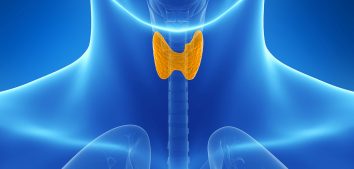
The Role of Physical Activity in the Prevention of Heart Attacks and Strokes
A healthy lifestyle is not only about balanced meals, the right amount of sleep or avoiding stress and addictions. If we wanted to create a healthy lifestyle pyramid, physical activity would constitute the basis of it. You all know that exercise is healthy. There is evidence for this as well. According to data from Eurostat (European Statistical Office), in Europe we most often die from ischemic heart disease and cerebrovascular diseases, which include myocardial infarctions and strokes.
Where do such bad results come from?
The main risk factors for the development of the above-mentioned diseases are: excess weight, abdominal obesity, hypertension, high cholesterol, diabetes, smoking, lack of regular exercise, and alcohol abuse.
One of the basic methods of dealing with most of the listed causes that can lead to illness is exercise. You know that in addition to diet, activity increases energy demand and helps you to reduce body weight, regulate blood pressure and glucose levels, reduce insulin resistance, and improve blood circulation.
Coronary heart disease, which may lead to heart attacks, is the most common cause of death in Poland. Unfortunately, it affects younger and younger people. Do not wait for it to develop, go for a walk, and if you have children, build their sports habits. The pandemic and the lack of PE classes take a huge toll in the form of excess weight and obesity in the young generation, and this means a greater risk of heart attack and stroke in adulthood.
People with coronary artery disease often suffer from exercise intolerance, which may be related to other diseases, e.g. lung diseases, anemia, obesity or poor physical condition. If you have risk factors or you get tired quickly during exercise, I recommend consulting your family doctor or a cardiologist.
You may have heard about the recent event during a football match when one of the players from the Danish national football team lost consciousness, fell on the pitch and, as it turned out later, suffered a heart attack. That’s why it is worth performing health checkups on a regular basis because health problems are often difficult to notice and can affect everyone.
Another disease mentioned is stroke, defined as sudden ischemia of the central nervous system or a hemorrhage causing a neurological deficit. Common complications include all kinds of disabilities that require specialist treatment and rehabilitation. Stroke can also be fatal. There are often no serious symptoms, which is why, similarly to coronary artery disease, prophylaxis and regular diagnostics are the basis. Do you have a complete set of basic health check-ups at least once a year?
How can we protect ourselves from heart attacks and strokes?
Prevention is the key word. It is nothing more than increasing people’s awareness and encouraging them to start a healthy lifestyle. The main goals of prevention are: physical activity, changing eating habits and fighting addictions (smoking, alcohol).
We will focus today on physical activity. There are many studies showing how important physical activity is in the context of health. You all know the WHO recommendations for the amount of 10,000 steps a day. According to the latest research by Harvard scientists, healthy people who take more than 4,400 steps a day have a lower risk of death compared to the less active group. The risk decreases with increasing activity to 7,500 steps and then stabilizes.

Does that mean you don’t have to try that hard to protect yourself from disease? This is not the way. The recommendations of the European Society of Cardiology say that at least 150 minutes of moderate-intensity exercise per week or at least 75 minutes of high-intensity exercise per week is the minimum you should introduce into your everyday life. Experts emphasize that gradually increasing the time we spend on aerobic effort (e.g. cycling, running, Nordic walking, fast walks, swimming) brings an additional benefit. Each training session should last at least 10 minutes and the recommended frequency is a minimum of four sessions per week, and daily activity is highly recommended.
A study by Dr. Esmée Bakker of Radboud University Medical Center in Nijmegen showed that active people with risk factors such as hypertension, high cholesterol or diabetes who had reduced their activity, increased their risk of cardiovascular disease and death by 40%. Increasing the level of activity from moderate to higher reduced the risk by 30% compared to those who remained on the same level.
Regardless of whether you are healthy or have risk factors, you should increase your physical activity to reduce the possibility of a heart attack and stroke. Not enough exercise will not lead to physiological effects, while excessive effort that is not adapted to your age, health condition and capabilities can even be harmful.
Are you not very active?
Start with walking, climbing stairs, jogging, and regular exercise such as yoga, gymnastics, skipping rope, cycling, swimming.
First workouts should be moderate-intensity endurance efforts (up to 60-75% of the maximum heart rate HRmax – below you will find the formula how to calculate it). The use of increasingly popular watches with pulse measurement and a pedometer will be helpful here. It is a good idea to introduce elements of strength exercises in addition to your regular activity, and they should constitute 10 to 15% of the training volume. It is worth starting each session with a 5-10 minute warm-up and end with a dozen or so minutes of calming exercises.
Formulas for calculating maximum heart rate according to Sally Edwards:
- For women = 210 – 0,5 x age – 0,022 x weight [kg]
- For men = 210 – 0,5 x age – 0,022 x weight [kg] + 4
Summary
Low levels of physical activity increase the risk of heart attack, stroke and cardiovascular death. The popular and true phrase “you are what you eat” could change to “the more you move, the healthier you become”. I hope you found a solid portion of motivation in this text and that I convinced you to stay more active! ?
Bibliography:
- Bielecka W. Choroby układu krążenia wyzwaniem dla promocji zdrowia. Nauki Przyrodnicze i Medyczne: Żywienie, sport oraz zdrowie. IPKIN. Lublin 2018
- I-Min L, Eric JS, Masamitsu K. Association of Step Volume and Intensity With All-Cause Mortality in Older Women. Intern Med. 2019; 179(8):1105-1112
- Jegier A, Stasiołek D. Aktywność ruchowa w pierwotnej prewencji choroby niedokrwiennej serca. Folia Cardiol. 2004; tom 11, supl. A, A46–A48
- Wernecki P. Rola aktywności fizycznej w profilaktyce zawałów i udarów; 20.04.2021









Comments No Comments
Join the discussion…